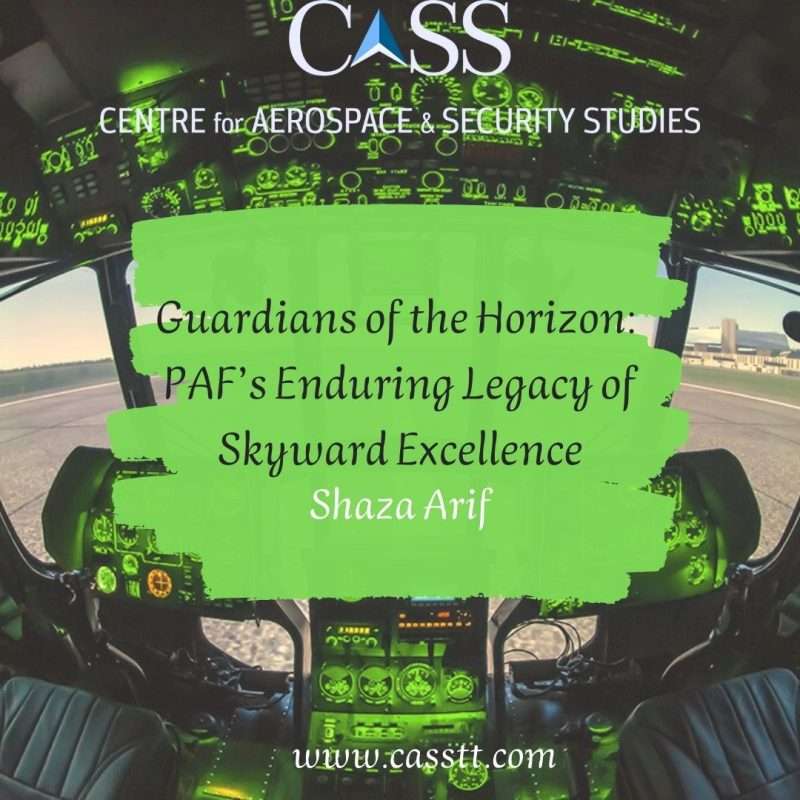Airpower has steadily ascended in its significance in the annals of warfare. From its nascent stages in World War I, where it showcased its potential in counter-air measures, support for ground forces, and strategic bombing, to its maturation between the wars. Notably, this interwar period was not just about technological advancement but a deepening understanding of airpower theory. By World War II, airpower’s myriad roles – from air support, interdiction of supply lines, and escort missions to troop deliveries and long-range bombardment – cemented its place as a crucial military tool. As a result, global leaders increasingly recognised and integrated airpower into their broader military strategies.
The ascent of airpower was not the only seismic shift in modern warfare. The dawn of the nuclear age brought with it a reimagining of destruction on an unprecedented scale. During the Cold War, the deterrence theory reigned supreme, suggesting that the sheer destructive potential of nuclear weapons could prevent outright conflict. This perspective positioned nuclear capabilities at the pinnacle of airpower, overshadowing its other diverse roles. However, regional conflicts like the Indo-Pak War of 1965 and the Arab-Israeli war of 1967 offered poignant reminders of airpower’s multifaceted significance. These wars underscored not only the artful application of airpower across various roles but also emphasised the pivotal role of training and leadership. In these instances, smaller air forces, perceived as underdogs, managed to outmanoeuvre and outperform their numerically superior adversaries, proving that expertise and strategy could tilt the scales of war.
The Indo-Pak War of 1965 marks an important chapter in the history of the subcontinent. While brief, the conflict offers valuable insights, especially about the potent role of airpower and its strategic application. As the war broke out, the Pakistan Air Force (PAF) was well-equipped with American-supplied F-104 Starfighters, F-86 Sabres, B-57 bombers and a high-altitude reconnaissance squadron of RB-57. With a keen insight about Indian activities, the PAF was put on high alert by then-Air Chief, Air Marshal Nur Khan, days before the conflict began. Leadership and professionalism played a decisive role in responding to the enemy’s incursions and countering the threat posed by its superior forces. Despite a considerable disparity between the two forces, standing at a ratio of 3:1, the rigorous training and tactical prowess shone through, enabling Pakistan to outmanoeuvre a conventionally larger Indian Air Force (IAF). By the end of the conflict, the IAF had lost 66 aircraft, whereas the PAF lost 12 F-86s, 1 F-104 and 3 B-57s.
Heroic actions of the PAF officers stand as a testament to the inherent professionalism and motivation embedded within the service. Notable amongst them were Squadron Leader Sarfaraz Rafiqi and Flight Lieutenant Imtiaz Bhatti, whose swift and strategic actions enabled them to destroy four Indian Vampire aircraft on the eve of the war. Following these setbacks, the IAF was compelled to withdraw 80 Vampires and an additional 50 Ouragons from frontline duties. This move dramatically diminished their operational strength by a substantial 35%.
A pivotal turn in the conflict occurred when Squadron Leader MM Alam, piloting his F-86, downed 5 Indian Hawker Hunter aircraft, despite the latter’s technological advantage. Remarkably, he achieved this feat in just 30 seconds, not only marking a decisive moment in the battle but also setting a world record.
Such heroism by the PAF extends beyond the confines of the ’65 War. Legendary fighter pilot Saiful Azam will always be remembered for his courageous achievements in both the 1965 War and the 1967 Arab-Israel War, where he became the only fighter pilot who downed four Israeli aircraft – an unparalleled feat and another world record. The truest embodiment of bravery, loyalty and sacrifice for the nation would surface again in 1971 through the actions of a 20-year-old Pilot Officer Rashid Minhas. In a selfless act, he thwarted the hijacking of a PAF plane by a defecting officer, sacrificing his own life. The prestigious Nishan-e-Haider remains an emblem of his wholehearted commitment to the motherland. Another notable instance is that of Flight Lieutenant Sattar Alvi. Deployed in 1973 to aid the Syrian Air Force against Israeli incursions, Alvi expertly piloted a Syrian MiG-21, managing to down an Israeli Mirage fighter jet. In a recent chapter from 2019, the PAF’s proficiency was underscored when they downed an Indian MiG-21 and Su-30 on February 27th, responding to India’s aggressive actions a day earlier, known as the Balakot strike. While Pakistan executed its operation flawlessly, the Indian side experienced a fratricide incident, highlighting current vulnerabilities in the IAF’s defence strategy. PAF’s befitting response showcased the continued relevance of the pivotal role of airpower in Indo-Pak’s strategic calculus.
Throughout its storied history, the PAF has stood as a bulwark against a numerically superior foe, its strength derived from visionary leadership, judicious use of advanced technology, meticulous training, and an undying commitment to defending the nation’s skies. To any adversary who might underestimate them: the PAF’s legacy of excellence isn’t merely a chapter in history – it is a continuous narrative, echoing with resilience and determination, ensuring that Pakistan’s skies remain secure now and for generations to come.
Shaza Arif is a Research Assistant at the Centre for Aerospace & Security Studies (CASS), Islamabad, Pakistan. The article was first published in Islamabad Post.She can be reached at: [email protected]
Design Credit: Mysha Dua Salman





